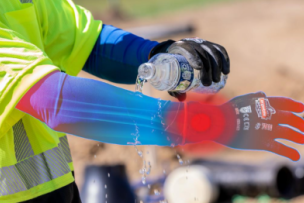MCR Safety has over forty years of experience as a leader in the field of personal protective equipment (PPE). Our assortment of offerings includes gloves, glasses, and garments which are made from the highest quality materials available to ensure maximum safety, comfort, and style.
During the 1960s, a new innovative form of welding appeared on the scene: plasma cutting systems. Thermal Dynamics sold their first system to Ryerson Steel for processing stainless steel. Its advantages were immediately recognized: as a cleaner and a more accurate cut. Once just an industrial tool, plasma cutters are now extremely affordable and are used by professional metal workers and hobbyists alike.
What is plasma cutting? Well, not many of us have an extensive physics background, so the process may initially seem complicated. However, MCR Safety will break down how it works for you below. The easiest way to think of it is by visualizing a superheated, electrically ionized gas that melts through metal.
This article will go over how plasma cutting works, provide an overview of the safety precautions that should be taken when using a plasma cutter, and suggest the best ways to protect your eyes while working with one.








Talk to Us!
Leave a reply
Your email address will not be published. Required fields are marked *